annabobrowska/iStock/GettyImages
Pork is a naturally flavorful meat however it's prepared, but it really shines when it's cured or smoked. Its mellow richness provides an ideal base for the added flavors of salt, sugar and smoke, combining to give hams and other cured meats their distinctively addictive sweet and savory taste. Most of the flavor comes from the salt and sugar used to cure the ham, but smoking the ham afterward makes it even tastier.
Smoke, Salt and Sugar
Smoke is primarily a flavoring in cured meats, with little value as a preservative. Complex compounds in the smoke provide a degree of protection against molds and bacteria on the outside of the ham, and smoke also helps prevent its fat from becoming rancid. That makes it a fortuitous partner for the sugar and salt used in curing hams and other meats. They penetrate deeply into the meat, disrupting harmful bacteria at the cellular level and preventing them from causing spoilage. Large cuts such as ham also require nitrites, which are lethal to the bacteria that causes botulism. These ingredients provide most of the preservation, while smoke's beneficial effects protect the ham's surface.
Dry-Cured Hams
Hams can be made through either wet or dry curing techniques. Dry-cured hams are packed in a dry mixture of salt, sugar, nitrites and other flavorings. They must cure one week for every inch of thickness, or you can calculate 1 1/2 days per pound. The ham must be kept at refrigerator temperatures during this period for food safety. Then it's rinsed and hung at 50 to 60 degrees Fahrenheit for about two weeks, as it dries and its flavors concentrate. The ham is finished by cold-smoking at a temperature of 90 F to 100 F for up to seven days. The smoking process doesn't cook the ham, so its weight doesn't matter. The surface should be a deep chestnut-brown when finished.
Wet-Cured Hams
Smoking wet-cured hams is a different matter. They use the same curing ingredients, but in the form of a wet brine. The ham is immersed in the brine, and usually injected with it, and can be fully cured in just a few days rather than the weeks-long or months-long dry-curing process. Once the ham is fully cured it can be dried out overnight in the refrigerator, then hot-smoked at a temperature of 185 degrees Fahrenheit until its internal temperature reaches 150 F. This takes about 35 minutes per pound, or roughly 12 hours, for a full ham of around 20 pounds. A smaller shank or butt cut requires 25 to 30 minutes per pound.
Preparing Your Ham
How you serve your home-cured ham is largely a matter of taste. Dry-cured hams are safe to eat even when uncooked, and can be shaved thinly like prosciutto. Dry-cured Virginia hams and other country-style hams are usually soaked or simmered to remove excess salt, then baked. Soaking the ham makes it vulnerable to bacteria, so it must be cooked to an internal temperature of 160 F for food safety. Hot-smoked wet-cured hams are fully cooked, and only need to be reheated. Your home-smoked ham should be reheated to 165 F, like leftovers, but a store-bought smoked ham in its original packaging can be heated instead to just 140 F.
Related Articles

How Long Can Smoked Meat Last Without ...

How to Sugar Cure Bacon

How to Smoke a Ham in a Bradley Smoker

What Is a Black Forest Ham?

How to Fully Cook a Hickory Smoked Ham

Can You Make Prosciutto

How to Do Corned Pork
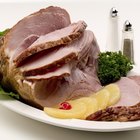
Does Boiled Ham Have Nitrites?

Uses of Saltpeter in Food
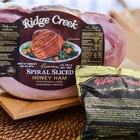
Cooking Instructions for a Ridge Creek ...

The Effect of Salt on the Tenderness of ...
Can I Use Liquid Smoke to Make Salmon ...
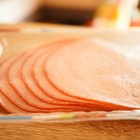
Ham Nutrition Information

How to Cook a Filipino Ham
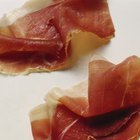
Can I Eat Prosciutto Ham Without ...

How Long Do You Smoke Sausage?

How to Make Salt Brine

How Many Calories Are in Smoked Ham?
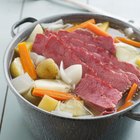
How to Pickle Beef Brisket

What Is Hog Casing Made Of?
References
- On Food and Cooking: The Science and Lore of the Kitchen; Harold McGee
- Virginia Cooperative Extension: Dry Curing Virginia-Style Ham
- Garde Manger: The Art and Craft of the Cold Kitchen; Culinary Institute of America
Resources
Writer Bio
Fred Decker is a trained chef and prolific freelance writer. In previous careers, he sold insurance and mutual funds, and was a longtime retailer. He was educated at Memorial University of Newfoundland and the Northern Alberta Institute of Technology. His articles have appeared on numerous home and garden sites including GoneOutdoors, TheNest and eHow.